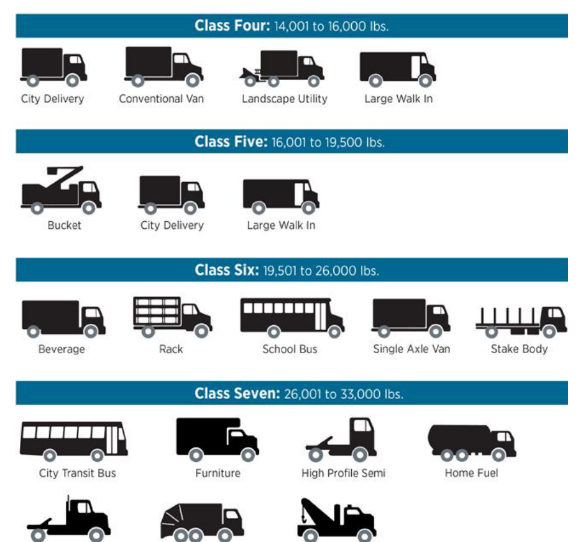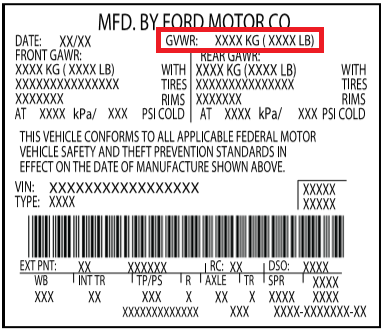Navigating the Weight: A Deep Dive into the 2025 Ford Explorer’s Gross Vehicle Weight Rating
The Ford Explorer, a stalwart in the mid-size SUV segment, is known for its versatility, spacious interior, and capable performance. But for those who plan to utilize the Explorer’s towing capacity or haul heavy cargo, understanding its Gross Vehicle Weight Rating (GVWR) is crucial. This comprehensive guide will delve into the 2025 Ford Explorer’s GVWR, exploring its significance, factors influencing its value, and how it impacts your driving experience.
Understanding the GVWR: A Foundation for Safe Driving
The GVWR represents the maximum permissible weight of a vehicle, including its curb weight (the weight of the vehicle without passengers or cargo), passengers, fuel, and any cargo. It’s a crucial safety parameter, ensuring the vehicle’s structural integrity and optimal handling under load. Exceeding the GVWR can lead to:
- Reduced braking effectiveness: Overloading puts extra strain on brakes, potentially leading to longer stopping distances and compromised safety.
- Tire failure: Tires are designed to handle a specific load. Overloading can cause them to overheat and fail, resulting in dangerous situations.
- Suspension damage: Overloading can stress the suspension system, causing premature wear and tear and potentially leading to component failure.
- Increased fuel consumption: A heavier vehicle requires more power to move, resulting in reduced fuel efficiency.
- Reduced maneuverability: Overloading can impact the vehicle’s handling and stability, making it more difficult to control.
Factors Influencing the 2025 Ford Explorer’s GVWR
The 2025 Ford Explorer’s GVWR is determined by a combination of factors:
- Engine and drivetrain: The engine’s power output and the drivetrain’s capability to handle torque and weight influence the GVWR.
- Chassis and suspension: The strength and capacity of the chassis and suspension components play a crucial role in determining the safe maximum weight.
- Tire and wheel specifications: The tire’s load rating and the wheel’s capacity to support the weight contribute to the GVWR.
- Braking system: The braking system’s ability to effectively stop the vehicle under load influences the GVWR.
- Vehicle configuration: The trim level, optional features, and accessories can affect the GVWR. For example, a heavy-duty tow package will increase the GVWR.
Dissecting the 2025 Ford Explorer’s GVWR: A Trim-by-Trim Analysis
To provide a clear understanding of the 2025 Ford Explorer’s GVWR, we’ll analyze it across different trim levels:
Base Model:
- Expected GVWR: 6,200 lbs
- Payload capacity: Approximately 1,500 lbs
The base model, while providing a solid foundation, has a lower GVWR compared to higher trims. This is primarily due to its standard engine and drivetrain, which are less powerful and capable of handling heavy loads.
XLT:
- Expected GVWR: 6,400 lbs
- Payload capacity: Approximately 1,700 lbs
The XLT trim offers an increased GVWR, thanks to its optional features and a more robust drivetrain. This allows for greater towing capacity and a higher payload limit.
Limited:
- Expected GVWR: 6,600 lbs
- Payload capacity: Approximately 1,900 lbs
The Limited trim, with its luxurious appointments and enhanced features, also boasts a higher GVWR. This is achieved through a combination of a more powerful engine and a beefed-up suspension system.
Platinum:
- Expected GVWR: 6,800 lbs
- Payload capacity: Approximately 2,100 lbs
The top-of-the-line Platinum trim features the most powerful engine option available for the 2025 Ford Explorer. This, coupled with its advanced suspension technology, allows for the highest GVWR and payload capacity among all trims.
Understanding Payload Capacity: The Weight You Can Carry
The payload capacity is the difference between the GVWR and the curb weight. It represents the maximum weight you can safely carry in the vehicle, including passengers, cargo, and accessories.
Maximizing Payload Capacity: Tips for Responsible Loading
- Weigh your cargo: Use a bathroom scale or a dedicated cargo scale to accurately determine the weight of your belongings.
- Distribute weight evenly: Avoid overloading one side of the vehicle. Ensure weight is distributed evenly across the cargo area.
- Secure your cargo: Securely fasten all items to prevent them from shifting during transit.
- Check your tire pressure: Overloading can affect tire pressure. Make sure to check and adjust it accordingly.
- Don’t exceed the GVWR: Always stay within the GVWR to ensure safe and efficient operation.
The Impact of GVWR on Towing Capacity
The GVWR plays a crucial role in determining the towing capacity of the 2025 Ford Explorer. It sets the maximum weight the vehicle can safely tow, including the trailer itself, its contents, and any passengers or cargo in the vehicle.
Towing Safely with the 2025 Ford Explorer
- Use a weight distribution hitch: This helps distribute the weight of the trailer evenly across the vehicle’s axles, improving stability and handling.
- Check your brakes: Ensure your brakes are in good working order and have sufficient capacity to handle the added weight.
- Maintain proper tire pressure: Inflate your tires to the recommended pressure for towing.
- Use a brake controller: This helps control the trailer’s brakes, ensuring smooth and safe stopping.
- Drive defensively: Be aware of your surroundings and anticipate potential hazards.
Conclusion: Navigating the 2025 Ford Explorer’s Weight with Confidence
Understanding the 2025 Ford Explorer’s GVWR is crucial for maximizing its capabilities while prioritizing safety. By considering the factors that influence its value, analyzing the GVWR across different trim levels, and adhering to responsible loading practices, you can confidently navigate the road with your Explorer, whether you’re hauling heavy cargo or towing a trailer. Remember, always prioritize safety and stay within the recommended weight limits to ensure a smooth and enjoyable driving experience.










